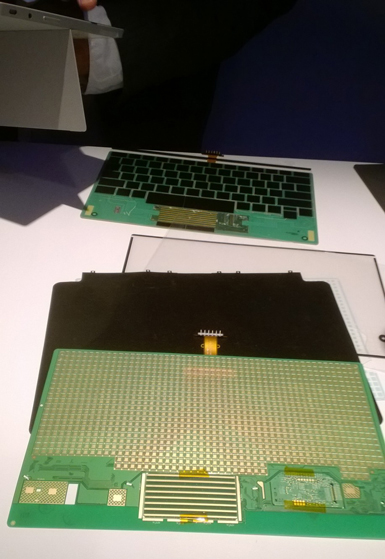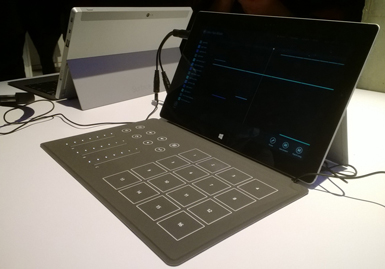The True Innovation of the Surface 2 Is the Touch Cover
The Surface 2 launch this week drew legitimate fire for a number of things -- the focus on speeds and feeds as if we were still in the PC refresh era, the lack of a mini version, and the failure to acknowledge or address serious pricing problems.
Microsoft deserves credit for one thing, though -- continuing to provide leapfrog innovation in user input. The real jaw-dropping component of the first-generation Surface was the Touch Cover. Microsoft started with the brilliant idea of the Apple iPad 2's magnetic cover and took it an inspired step further by converting the cover into a keyboard.
Even though the Surface hasn't caught on, Microsoft continues to pour R&D resources into the device -- and the team working on the Touch Cover in particular is hitting its stride. What Microsoft's Surface leader Panos Panay unveiled this week was a Touch Cover 2 that opens up the possibilities for Surface as a platform, and for the first time makes a clear case for special Surface apps distinct from other Windows 8 apps.
 Inside the Touch Cover 2 [foreground] is a versatile grid of 1,092 sensors. The original Touch Cover [back] had 80 sensors corresponding to key positions. (Photo credit: Scott Bekker.)
Inside the Touch Cover 2 [foreground] is a versatile grid of 1,092 sensors. The original Touch Cover [back] had 80 sensors corresponding to key positions. (Photo credit: Scott Bekker.)
The core change is a radical upgrade in the number of sensors in the Touch Cover (see photo above). The original Touch Cover had 80 sensors corresponding precisely to where the keys were printed on the outside of the cover. The Touch Cover 2's innards will sport a grid of 1,092 sensors, and they're more sensitive, as well.
Overkill for typing, you say? No doubt, but that's not where the action is in this game. We could be talking about all manner of applications. On display at the launch in New York was a custom Touch Cover 2 for music mixing (see photo below). Panay also showed a video of a Microsoft visit to an art school, where design students imagined all sorts of scenarios for Touch Cover 2s, from fold-out piano keyboards to drawing pads.
 The grid of sensors in the Touch Cover 2 enables limitless input layout possibilities. (Photo credit: Scott Bekker.)
The grid of sensors in the Touch Cover 2 enables limitless input layout possibilities. (Photo credit: Scott Bekker.)
Getting game developers interested in the platform represents a huge opportunity. Casual games exploded on touchscreen phones and tablets, but the interface has limited input options for more advanced games, and leaving finger grease all over the screen gets old.
Panay dropped some interesting hints about upcoming attachments called "blades." Game designers and other app developers could certainly design and print their own exteriors and resell the Touch Covers, although that approach swims against the tide of inexpensive apps and games. Building the price of a new $119 Touch Cover 2 into every software sale will only work for high-end applications.
It stands to reason that Microsoft would also release a versatile Touch Cover with a slot for ISVs to insert their own custom input layouts for their games or apps. They could box and mail the inputs or even conceivably have customers print them out themselves from a blueprint in the Surface Store. We'll find out more when Microsoft launches surfacemixproject.com on Oct. 22.
The Touch Cover 2 sensors are an exciting technical innovation, but Microsoft will need ISVs to sign on. The miniscule share of Surface devices in the overall tablet market won't make that an easy sell. Could this be the innovation that helps Microsoft shake off its recent habit of leading parades with no followers? Leave your thoughts below or send an e-mail to [email protected].
Posted by Scott Bekker on September 26, 2013